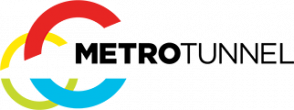Phoebe Powell and Kate Disher-Quill are the Melbourne-based artists behind Thank You and Surge – 2 large-scale photographic artworks presented by the Metro Tunnel Creative Program, each celebrating the efforts of frontline healthcare staff during the COVID-19 pandemic.
Here Kate and Phoebe take us behind the scenes to show how they adapted and responded to the unique challenges presented by the pandemic, capturing moments of intimacy amid the strange disconnect of remote work, social distancing and layers upon layers of personal protective equipment (PPE).
Gallery 1
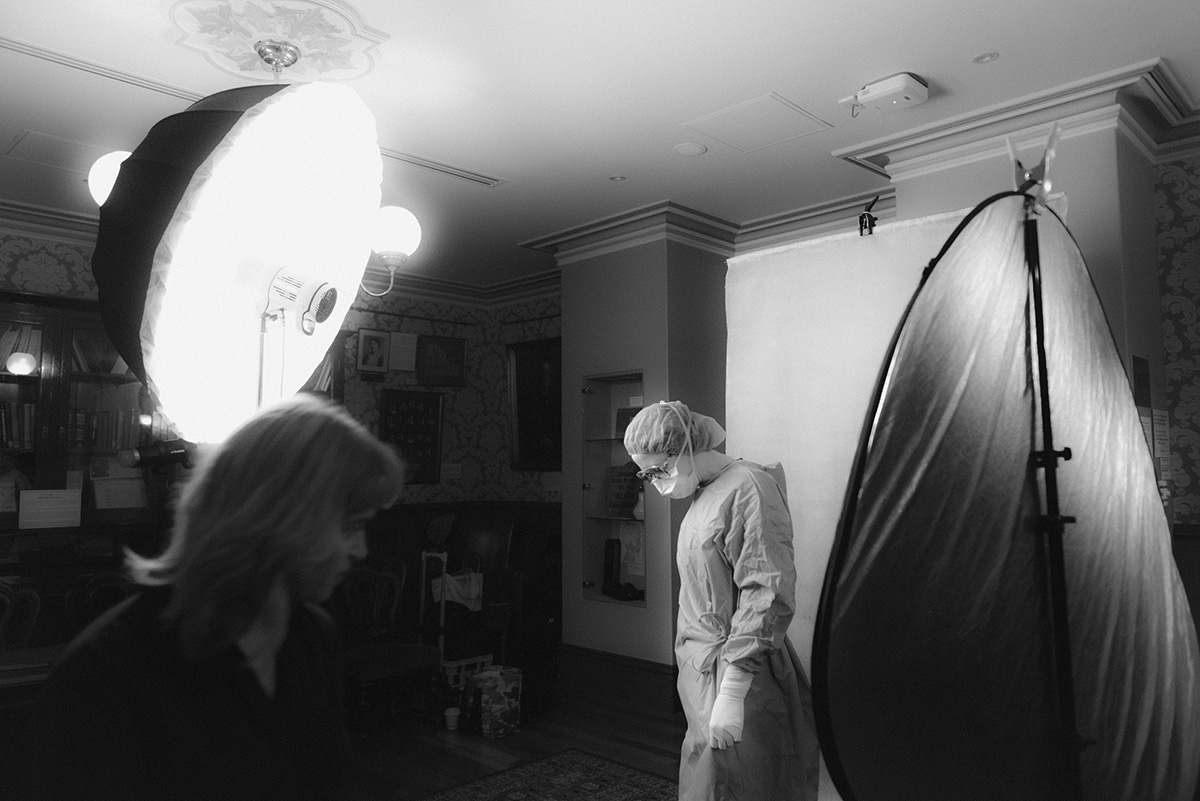
This is a behind-the-scenes shot from the Thank You portrait shoot in which Phoebe was commissioned by the Metro Tunnel Creative Program to photograph 52 healthcare workers after the first COVID-19 wave. With Kate assisting, the portrait sessions seemed to provide each participant with a little respite from what was a very stressful time at work. Listening to their insights and honest reflections, we realised there was a much greater story that needed to be shared – and so began the initial conception of Surge.
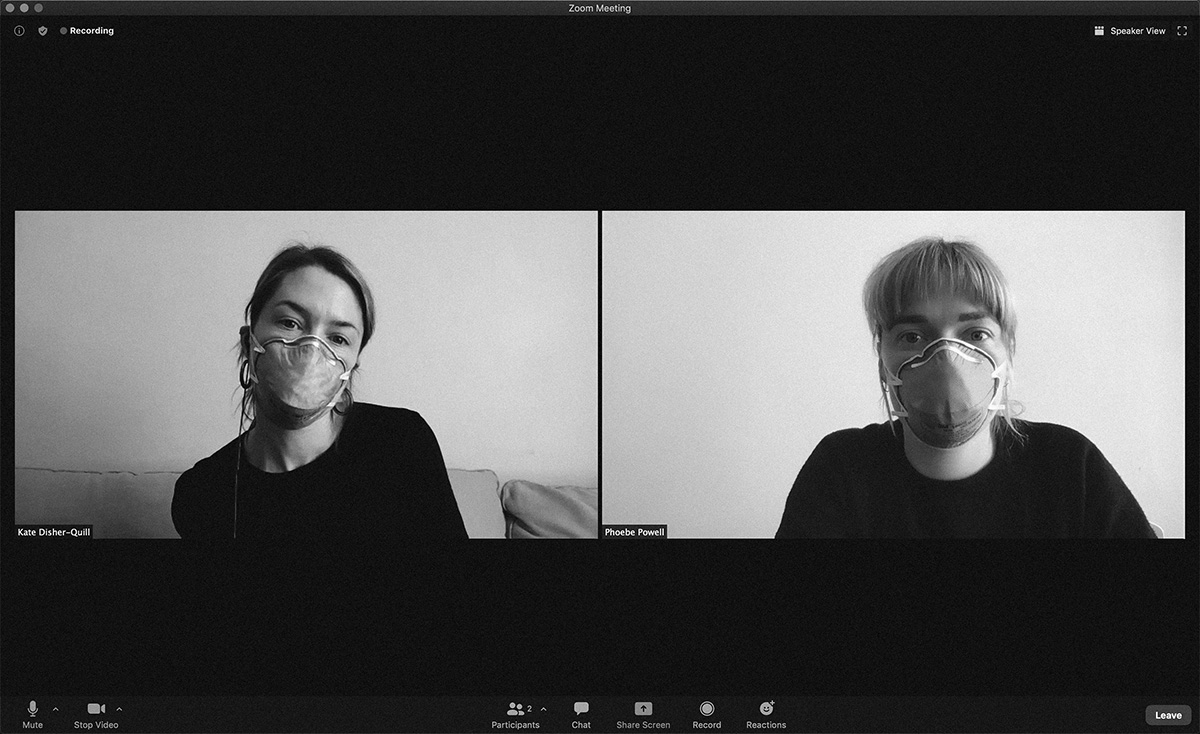
We live on opposite sides of Melbourne, which made it a little challenging to physically work together during lockdown. Phone and Zoom conversations became central to developing the work, allowing us to stay connected and collaborate during a time of physical isolation.
As weeks passed without the ability to photograph outside our homes, we had to think of new ways to create work and to document the stories that the participants shared with us. This meant putting ourselves in front of the camera, and in turn placing ourselves into the participants' experiences.
The above image is from a Zoom conversation during which we decided to wear the N95 mask for an hour. The purpose was to try and understand the physical experience that some of our portrait subjects had described to us, and to recreate the images healthcare workers shared with us of wearing face masks.
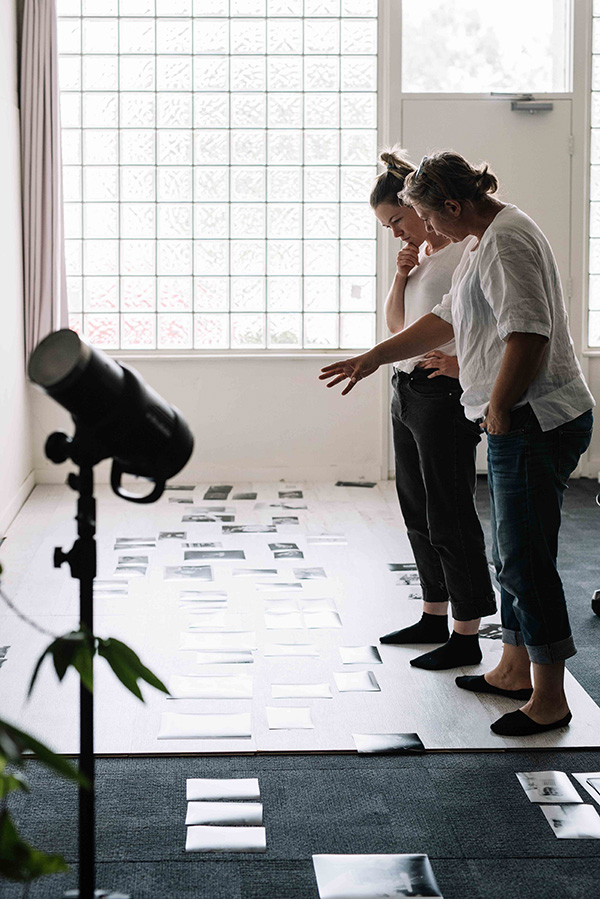
This image was taken during the Surge curation process with Heidi Romano. We were incredibly grateful to have Heidi on board to help us curate and design the final piece. With so many images and stories, we were unsure how the narrative would evolve. Heidi helped us decide that the work should in some way reflect the journey of the pandemic, so the series starts at the beginning with the virus and ends with a feeling of solace and relief.
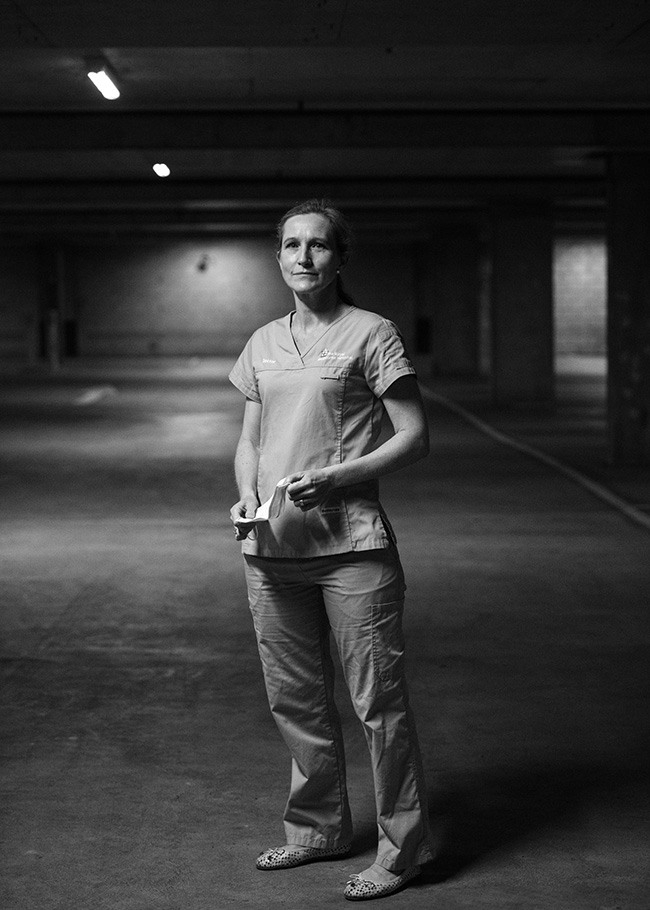
Nicola Walsham is a doctor in the emergency department of the Royal Melbourne Hospital. In our Zoom interview, Nicola spoke of the anxiety she felt before work, when she would drive into the often empty car park and don her mask in preparation for the shift ahead. As the head of her department, Nicola felt a lot of responsibility for the health and wellbeing of her team.
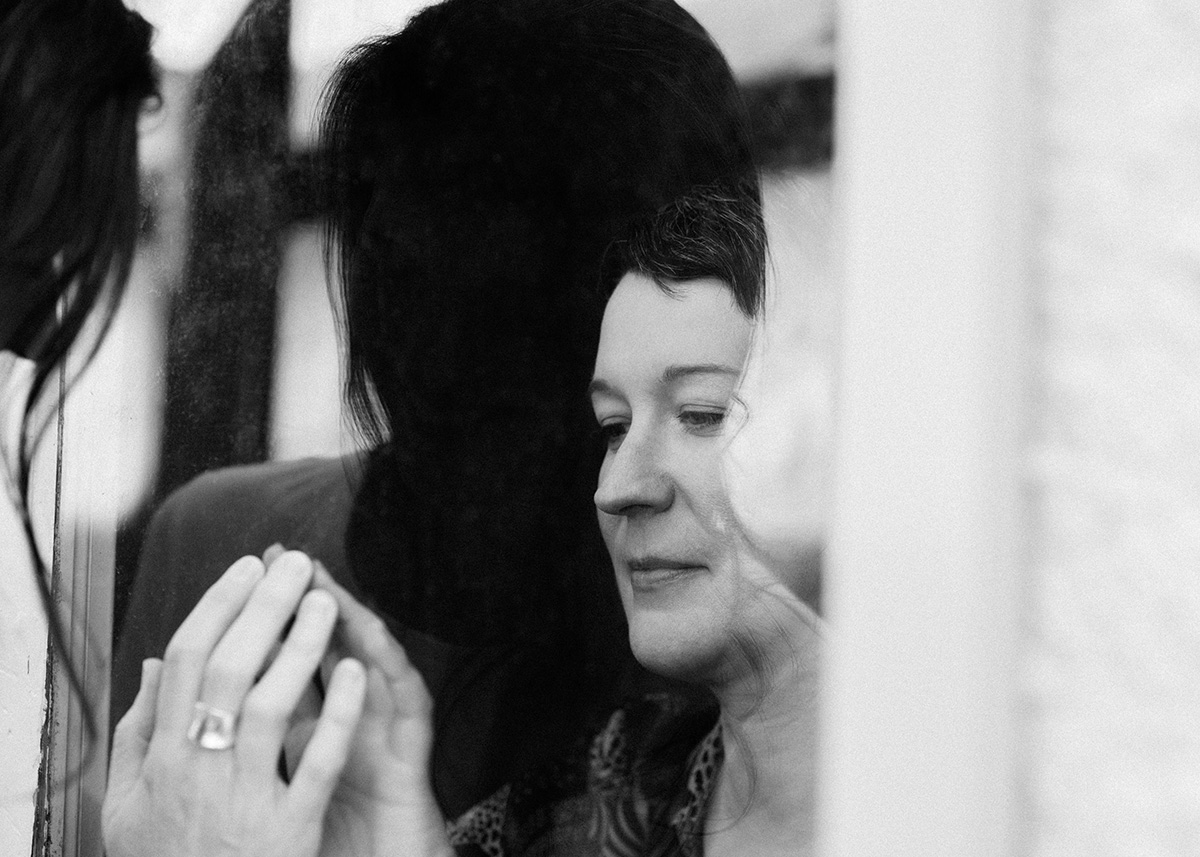
Grace Carroll works as an infectious disease nurse in the COVID ward at the Royal Melbourne Hospital. She contracted COVID-19 at work and was quarantined for weeks. Grace shared with us her experience of isolation and how she struggled not being able to see her sister, who lived just down the road. When the lockdown ended and Grace had fully recovered, I wanted to somehow show that disconnect, but instead captured a really intimate, connected moment. This was the first time she and her sister had seen each other in months.
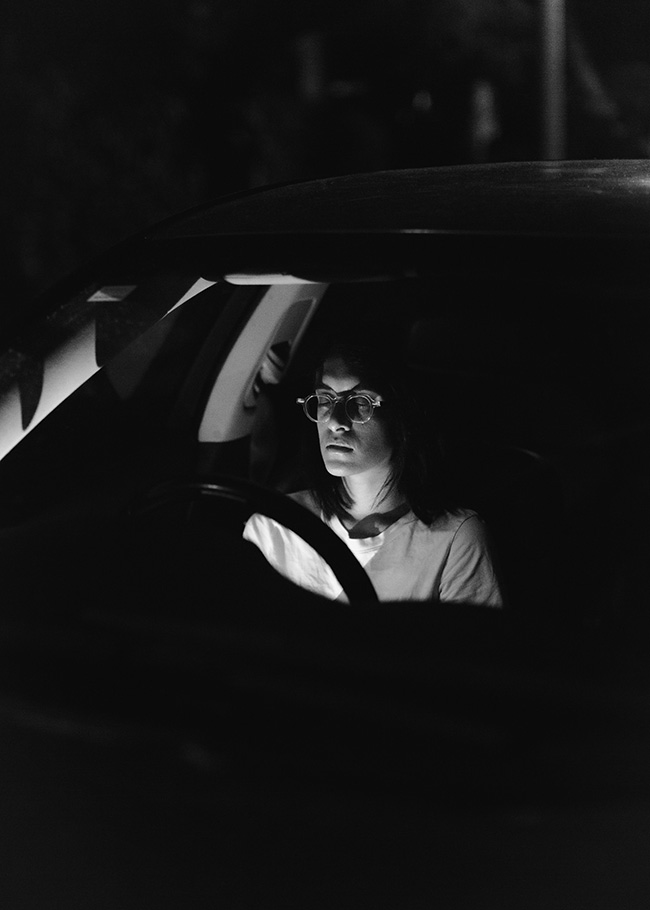
“There’s not a lot left in the tank at the moment.”
Tamishta Hensman, a registrar who worked in the palliative care COVID ward during lockdown, described what it felt like to finish her shift every night. Asked how she managed with the emotional load, she stated that she would call her family while she was in the car and talk to them the whole ride home.
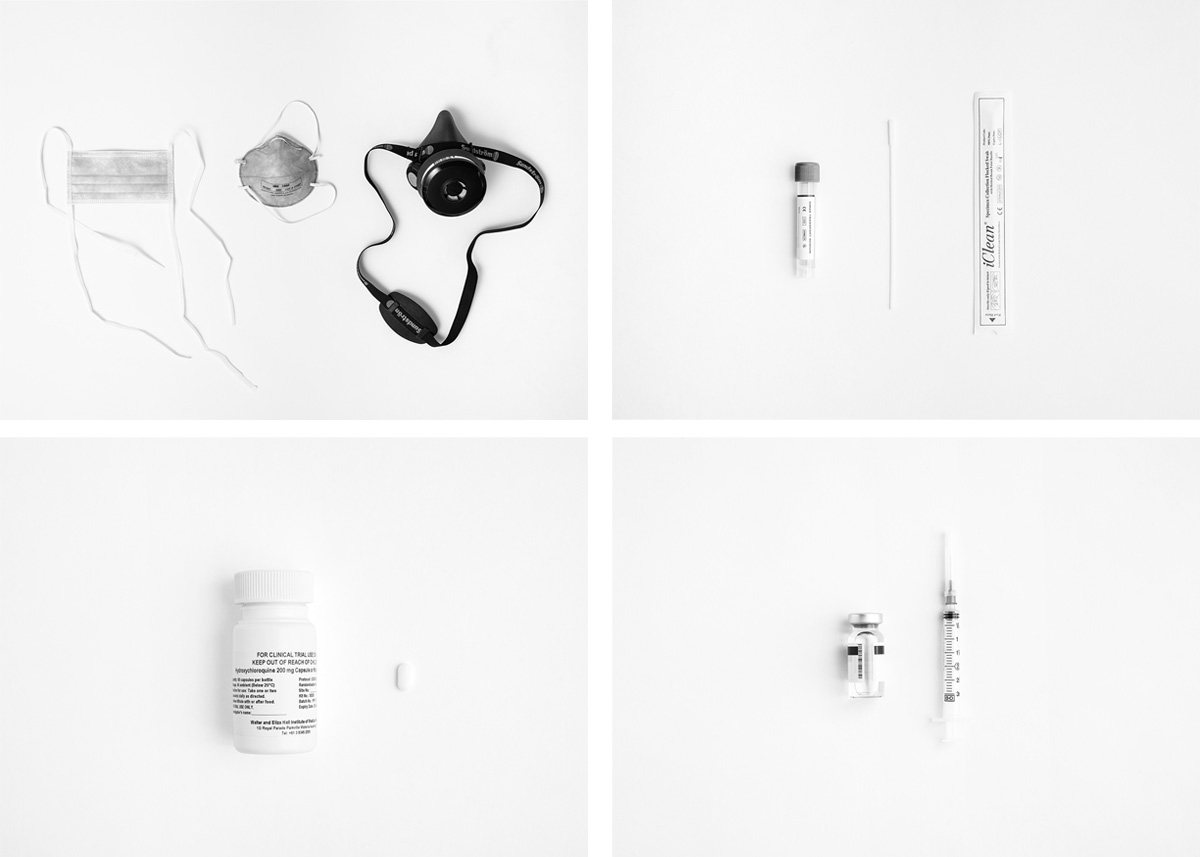
As we commenced the project in mid-2020, we realised we were living through an incredibly unique moment in history. Objects and images from this time would be part of the history books. With this in mind, we wanted to reference medical-style imagery to reinforce the archival nature of these objects, which we have titled "pandemic paraphernalia". We wanted to reference the dichotomy between the clinical protocols of the pandemic and the vulnerability of human experience by juxtaposing this medical-style imagery with intimate and personal storytelling.
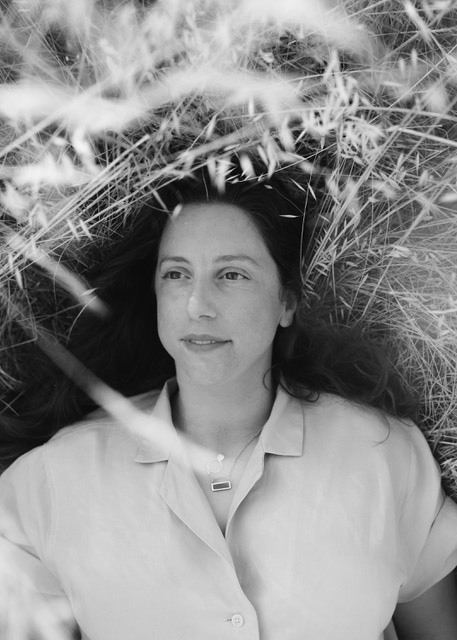
One of the challenges we faced in making Surge was deciding how to finish the series. We felt it was necessary to end it with a sense of solace and relief. Many people had described how nature was such a significant aspect of coping during the lockdown and so we decided to photograph nurse Claire McClen lying in the grass, her gaze simultaneously representing a moment of reflection and a sense of hope.
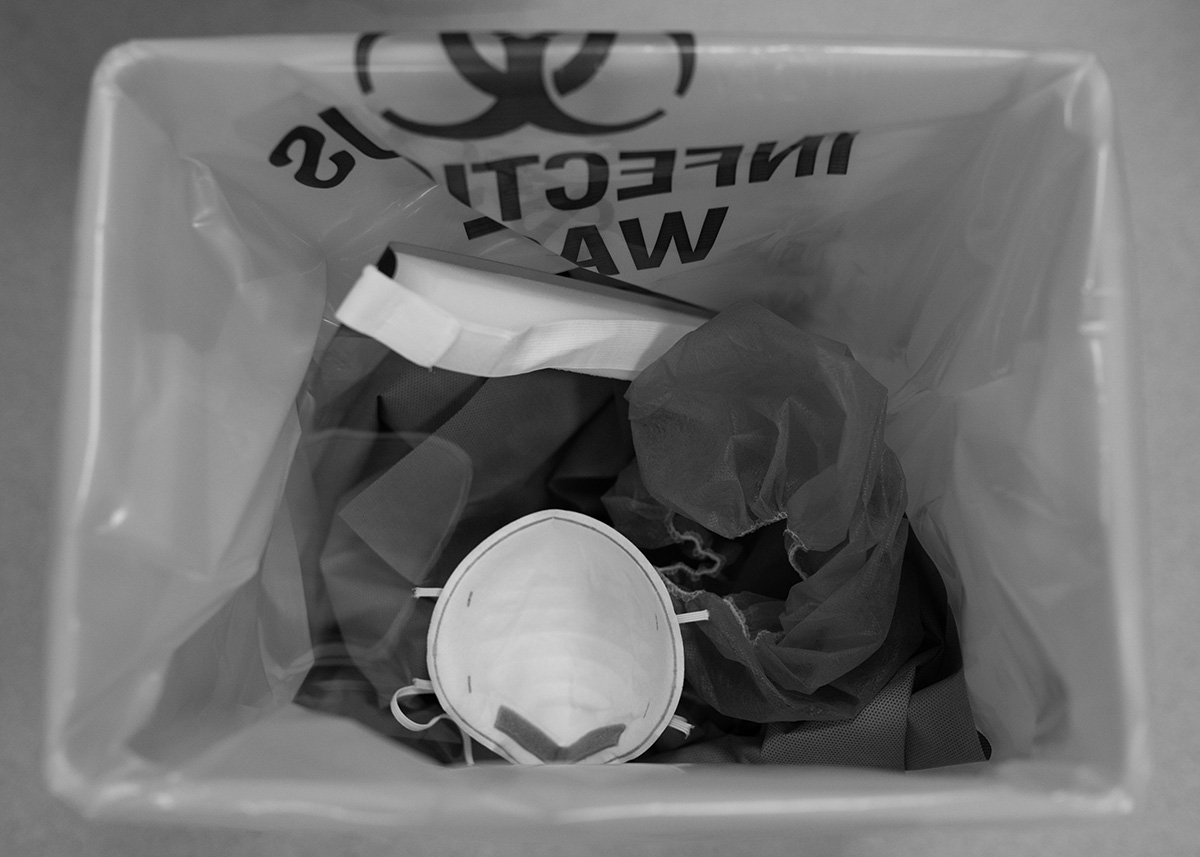
The rare opportunity we had to photograph healthcare workers inside their place of work just after the lockdown meant that we could witness the donning and doffing process. Used PPE is disposed of in infectious waste bags after each entry into a Hot Zone or Scovid (suspected COVID) Zone. Staff working in certain roles such as patient transport will go into a Hot Zone for a few minutes and out again, multiple times throughout the workday. Each time, they will don and doff new PPE. You can imagine the mass waste.
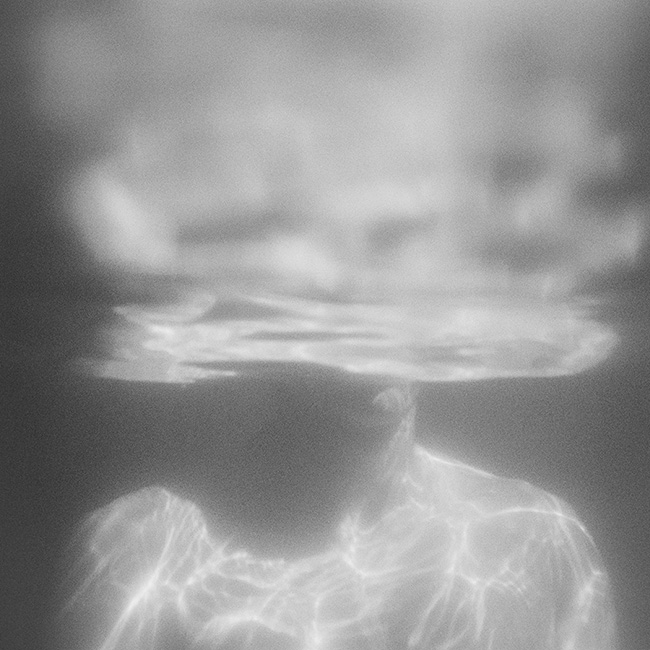
Sebastian, a research fellow who is part of the genomic sequencing team at Peter Doherty Institute, described the physical and emotional exhaustion he experienced during the height of Melbourne’s COVID-19 wave. He said he had taken up ocean swimming to cope.
“Swimming is how I keep my mind healthy. There is power in feeling small and vulnerable in the ocean.”
Gallery 2
Due to the ongoing restrictions that unfolded throughout 2020, the process of making this work, while challenging, became a means for us to push ourselves creatively and explore new ways of working. Unable to physically photograph the participants, a collaborative process evolved in which the participants shared their own images with us.
At home, we constructed recreations of their stories and images, placing ourselves and our partners in front of the camera, and in turn put ourselves into the participants’ experiences. This process not only gave us the opportunity to experiment, but gave us a deeper understanding of their stories and served as an escape from the repetitive and isolating nature of lockdown.
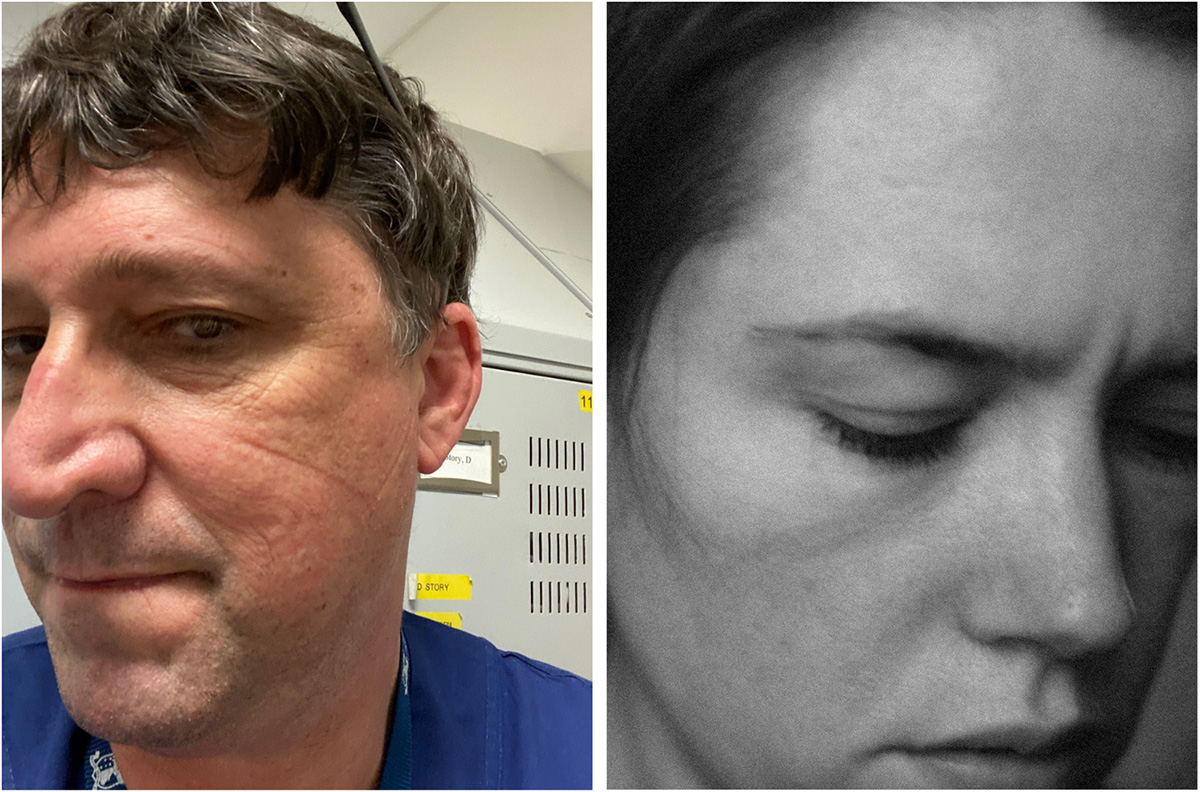
Original photo by David Story
Many of the healthcare workers described the exhaustion and physical marks created from wearing the N95 mask. The recreation (self-portrait, right) was taken after 1 hour of wearing the N95 mask at home.
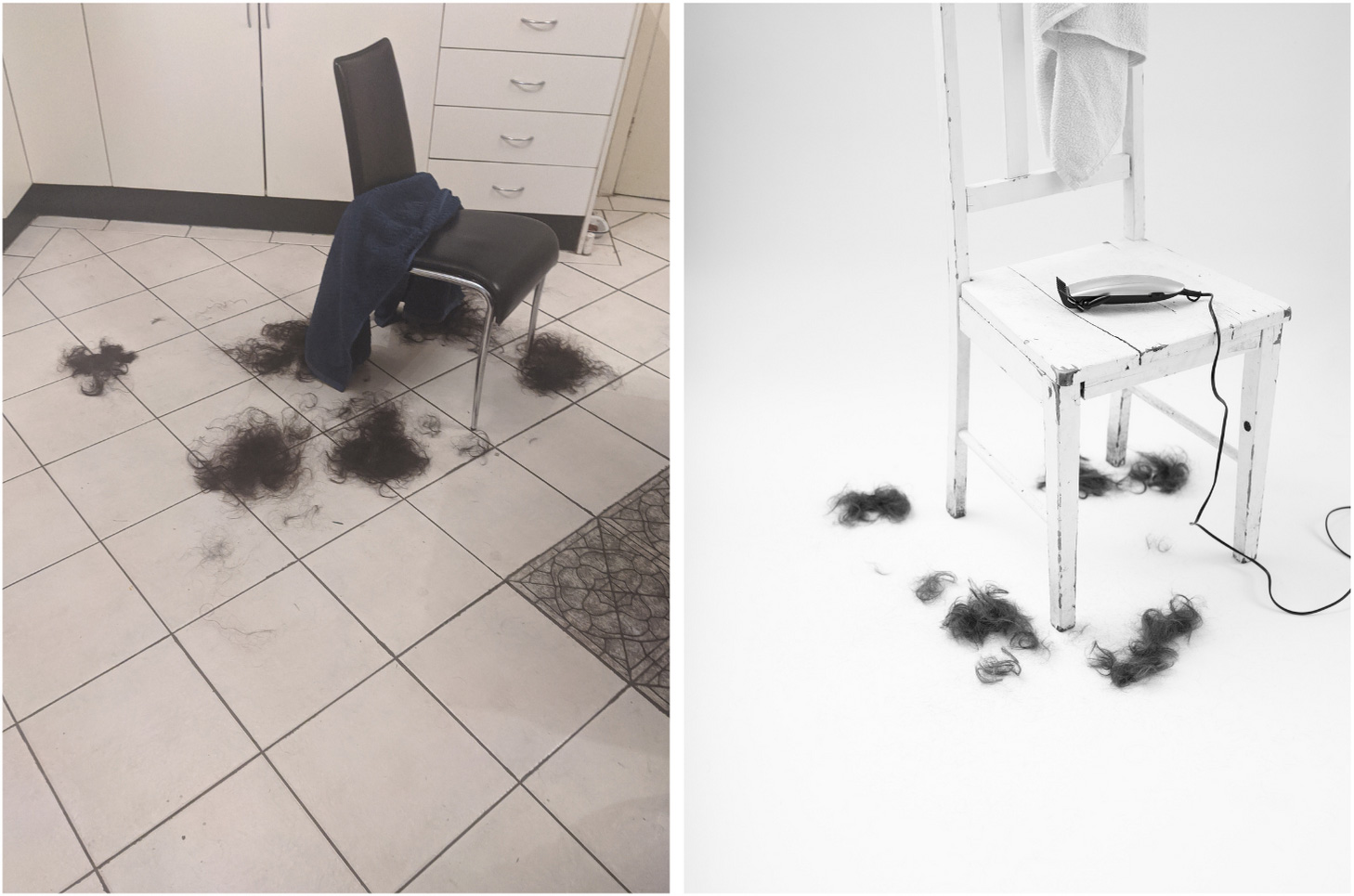
Original photo by Grace Carroll
Grace, a COVID-ward nurse, described how she shaved her hair during the first wave of the pandemic because she was tired of having to wash her long hair every night and was afraid of bringing the virus home. We recreated Grace’s image in Phoebe’s home studio (right).
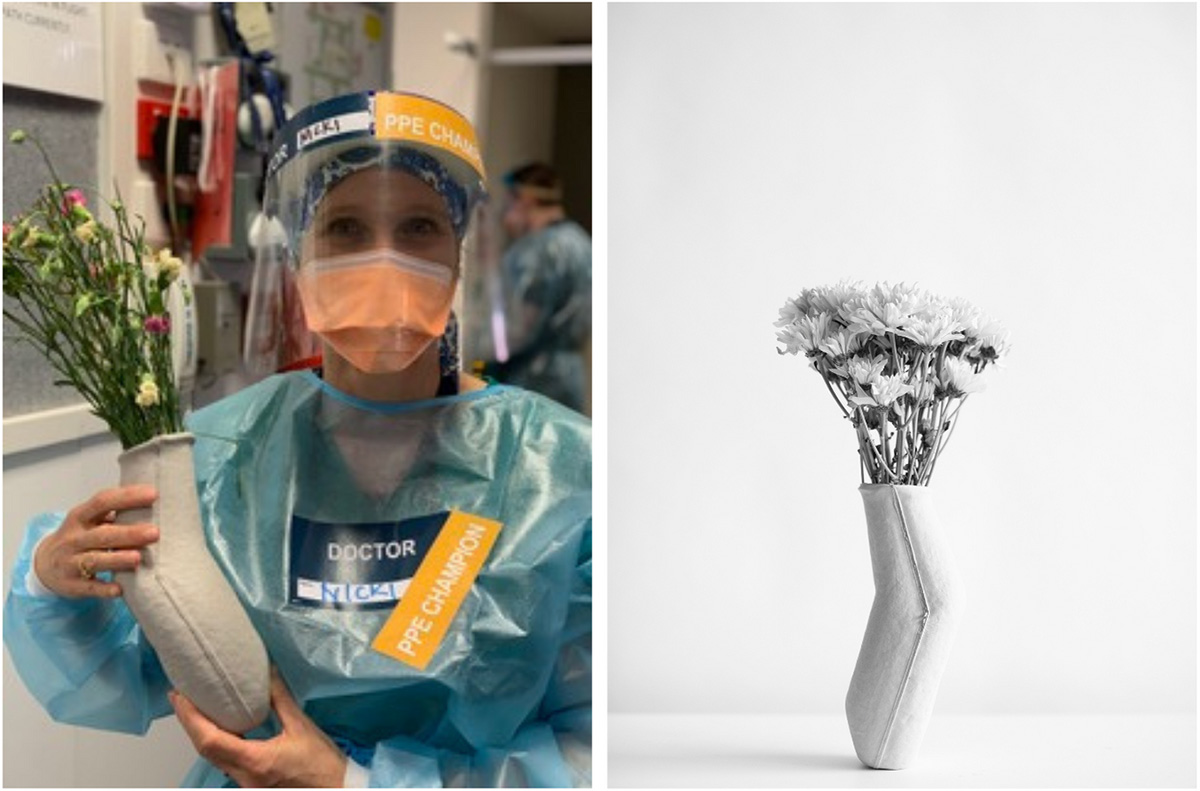
Original photo by Nicola Walsham
Nicola sent this image which shows how, as a way to bring some humour into the ward, staff used urine bottles as vases. We were aware that our recreation (right) wouldn’t be completely understood by the audience but wanted to reflect the surreal and slightly dream state of the work.
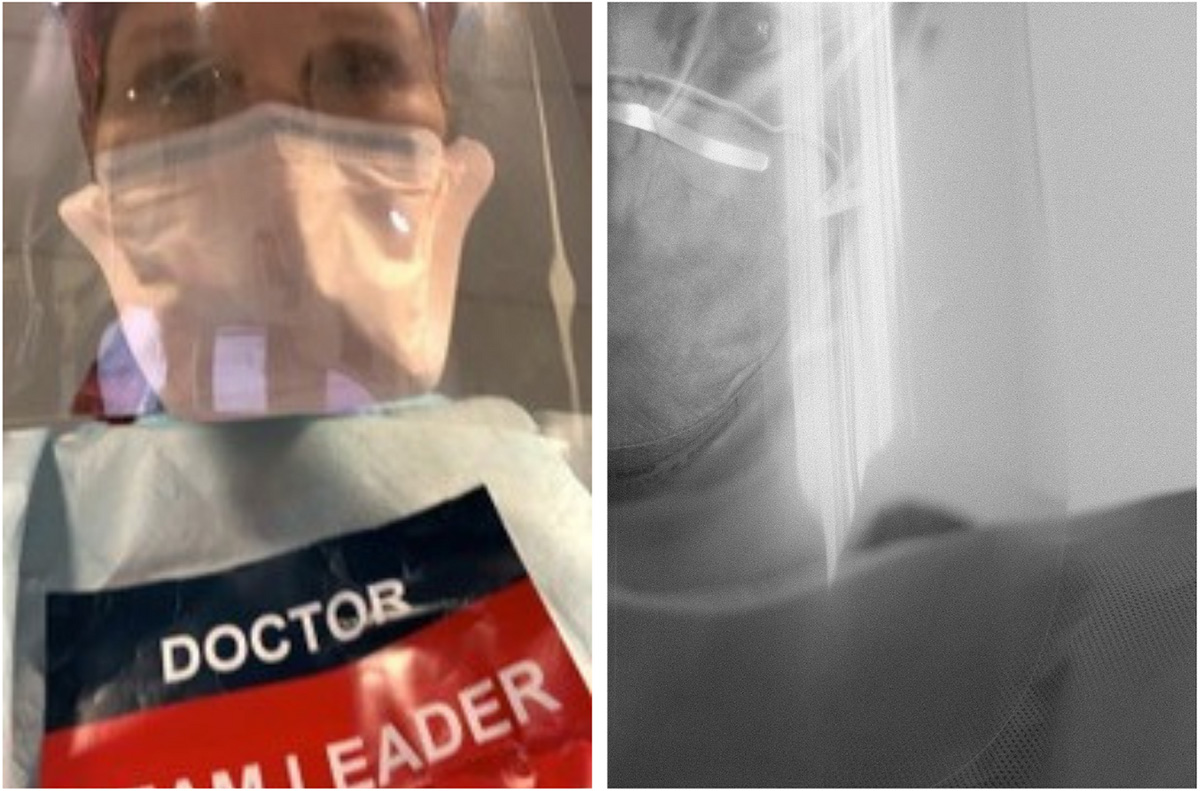
Original photo by Nicola Walsham
Many of the healthcare workers sent us images of the various layers of PPE they used. We felt it necessary to not only document this, but to put ourselves into PPE in order to understand what it felt like.
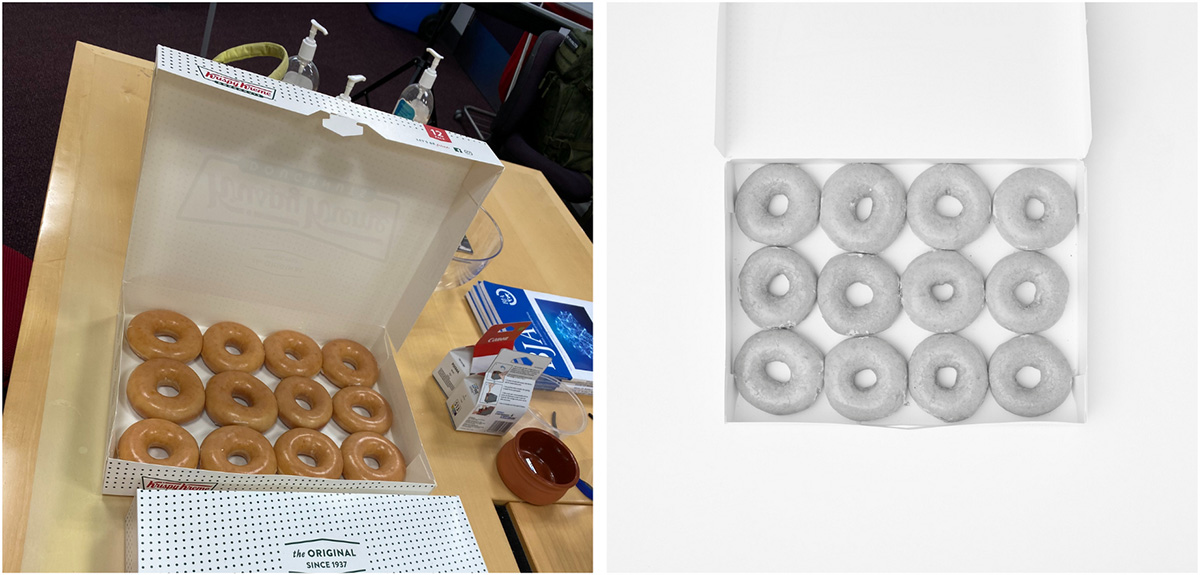
Original photo by Patrick Tan
We asked the participants to send us images of things that brought them joy. Many took photos of the treats and gifts that were left for them on their shifts. One of the participants sent us this image of a box of donuts, which later became the symbol for the infamous "donut day", meaning no new cases of (and no new deaths from) COVID-19. Our photographic recreation (right) was serendipitously taken on Victoria's 12th consecutive "donut day".

Original photo by Patrick Tan
Patrick Tan, staff specialist anaesthetist at the Royal Women’s Hospital, described how so much of his work is about providing patients with trust and comfort in a highly stressful and intimidating environment. This became incredibly challenging to do during the pandemic while covered in full PPE. Patrick navigated this challenge by printing a photo of his smiling face “behind the mask”.
